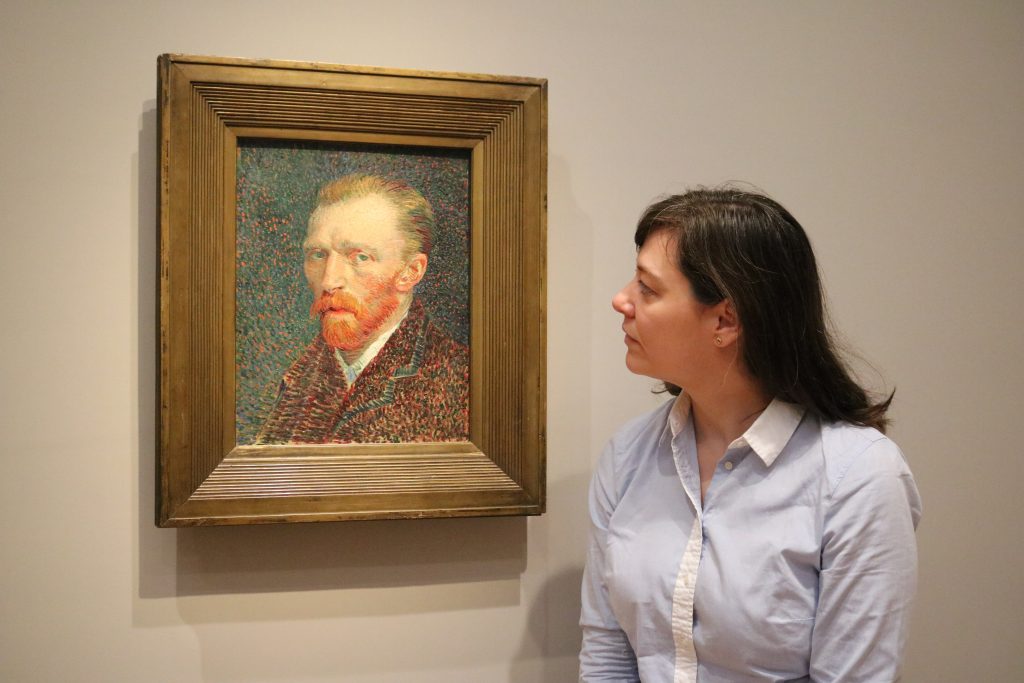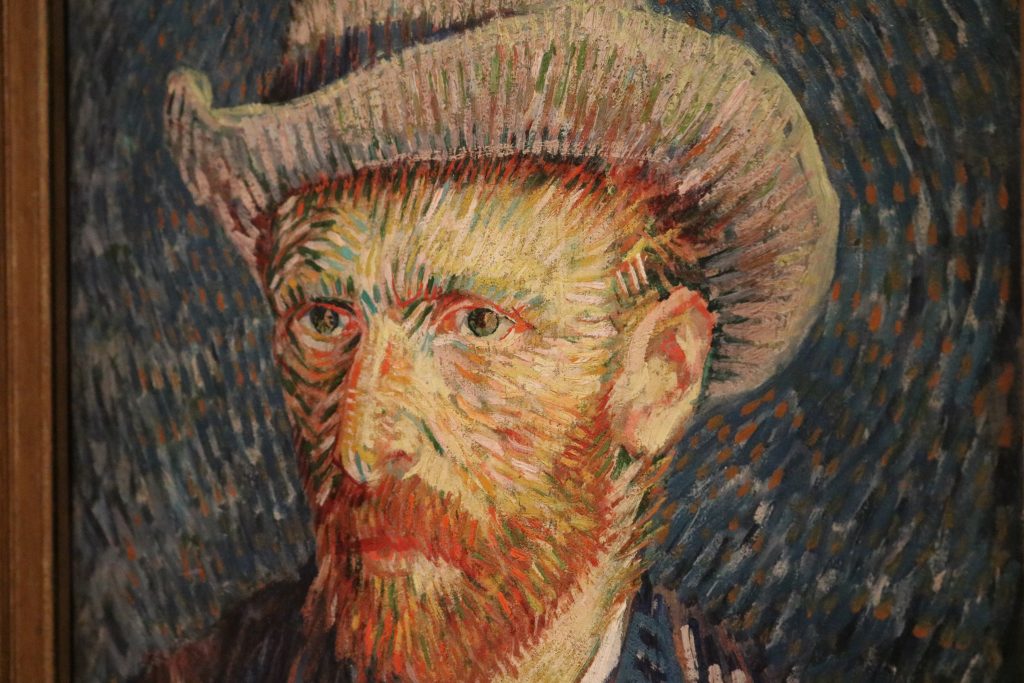The Morgan Stanley Exhibition Presents Van Gogh Self-Portraits. The Unique Gallery Will Display His Work At The Courtauld In London, From 3 February – 8 May 2022.
Today, this mastermind is one of the most popular Post-Impressionist painters, although the public did not widely appreciate him during his lifetime.
He is now famed for the extraordinary vitality of his works characterised by expressive and emotive use of brilliant colour and energetic application of impastoed paint.
There is no doubt that this is the legendary artist – Vincent Van Gogh.
“I put my heart and my soul into my work and have lost my mind in the process.” – Vincent Van Gogh.

Yes – it is the Post-Impressionist artist who, after struggling with extreme mental illness, took his own life shortly after creating some of his most famous paintings, including The Starry Night and Self Portrait With A Bandaged Ear in 1889.
After attending the opening exhibit in London at The Courtauld gallery, I soon discovered an entirely new world, one emulating his growing confidence in his use of colour as well as his deepening depression.
This exhibition is the very first one devoted to Van Gogh’s self-portraits across his entire career. The show takes Van Gogh’s most celebrated works as its springboard in The Courtaulds collection and brings together half of the self-portraits Van Gogh created during his lifetime.
Those piercing green eyes, red beard and ginger hair framed in golden halo moments kept me locked in place. Born in the Netherlands, Vincent van Gogh was a 19th-century Dutch painter who only started painting in his late twenties.

Many of his best works were only done in the last two years of his life before his tragic death at 37 years old.
During his life, he made 900 paintings, but only 33 of them were self-portraits.
As I sat down in the middle of the room with The Courtauld’s official Curator of Paintings, Dr Karen Serres, I looked around to see all the gazing eyes of a single legend watch our conversation unfold.
The entire exquisite exhibit took six years to organise and complete. The lengthy period was because the team wanted to ensure the paintings would be available simultaneously, as museums generously loaned to London for the occasion.

However, not all the pieces that had been in mind were able to take part. Three of Van Gogh’s self-portraits are still in private hands and were refused, which is understandable, as they are the most “precious and expensive thing in their collections”.
But that didn’t stop the rest from arriving.
From the USA to Norway, the precious cargo travelled worldwide to join together for the first time in history.
The exhibition features works from collections at the Rijksmuseum in Amsterdam, Washington DC’s National Gallery of Art, the Musee d’Orsay in Paris and the National Gallery in London. To name a few.

The collection features 16 of Van Gogh’s self-portraits charting his evolving artistic style over the final years of his life. From his early Self-Portrait With A Dark Hat in 1886 to Self Portrait With A Palette, painted at the asylum in 1889. This piece was one of his last self-portraits before his death in 1890.
“It’s slightly surreal but lovely. What’s great is that it is better than I could have imagined. When you look at the portraits individually and then see them side by side, there are just so many more connections that I hadn’t anticipated.” – Dr Karen Serres.
Known for being the icon of the tortured artist a year after his death, people today seem to project onto Van Gogh by identifying with his struggles and determination to keep going.

However, even though we all know Vincent can Gogh to be the painter who cut off his ear, Serres wanted to show people that more than meets the eye.
“I want people to move away from that and focus on his actual paintings. To look at his evolution of art that occurred in a short three-year span. You can chart his evolution and understand his process as a painter.” – Dr Karen Serres.
Van Gogh used colour arbitrarily to express himself more forcefully. He wasn’t trying to record his features but was interested “in pushing the limits with colours”.
Two of the self-portraits by Van Gogh reunited for the first time in 130 years. They had not been seen together since leaving the artist workroom in the Saint-Paul-de-Mausole asylum in the south of France.
Despite his unstable mental health, he was very productive: he made about 150 paintings in a year.

They were painted only one week apart at the asylum but showed Vincent van Gogh in a very different light. Indeed Van Gogh made it clear that being able to paint was key to his healing process.
Supported by the founder of Citadel, Kenneth C. Griffin and the Huo Family Foundation, the exhibit was one to remember.
Even though he remained hidden and unappreciated in his short lifetime, he is now considered one of the most famous and influential figures in the history of western art.

Perhaps even one of the saddest and most humble.
“Don’t Die Wondering is all about curiosity. Being curious – that’s why we do exhibitions. Stay curious, and don’t assume there is nothing left to say or research. I mean, you think that everything has been said and done on Van Gogh by now – then you discover a whole new world of his self-portraiture.” – Dr Karen Serres.


